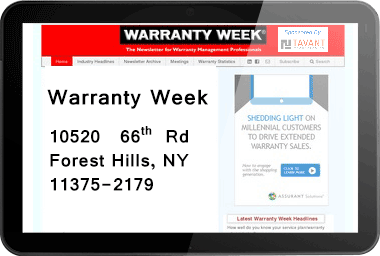November 14, 2006 |

|
ISSN 1550-9214 |
|
Editor's Note: This column by David Cope of MGH Consulting is the latest in a series of contributed editorial columns. Readers who are interested in authoring future contributed columns can click here to see the Guidelines for Editorial Submissions page. Reverse Logistics:Manufacturing is increasingly being outsourced. This changes the reverse logistics dynamic, as the size of the repair supplier base reduces and the links between manufacturing and service become weaker.By David Cope, MGH Consulting The environment that Logistics and Service Professionals find themselves in is changing rapidly and they are under pressure to keep up. Manufacturing is increasingly being outsourced to original design manufacturers (ODMs), leaving the "manufacturer" as either an assembler, or in the extreme, purely the badge on the product. This changes the reverse logistics dynamic, as the size of the repair supplier base reduces and the links between manufacturing and service become weaker. Often, the move to increased outsourcing of manufacturing drives up the size and cost of the repairables, which, when uncontrolled, has a devastating effect on stock holdings and obsolescence. The ever-increasing volume of global legislation on hazardous materials, such as the European Union's Waste Electrical and Electronic Equipment (WEEE) and Restriction of Hazardous Substances (RoHS), forces operations to not only look at reverse logistics for repairables, but for a much wider range of low cost parts previously treated as consumables. All this occurs against a backdrop of system pricing pressure and the need for the service organisation to minimise its warranty costs, whilst striving to improve the quality of its service delivery through better fill. 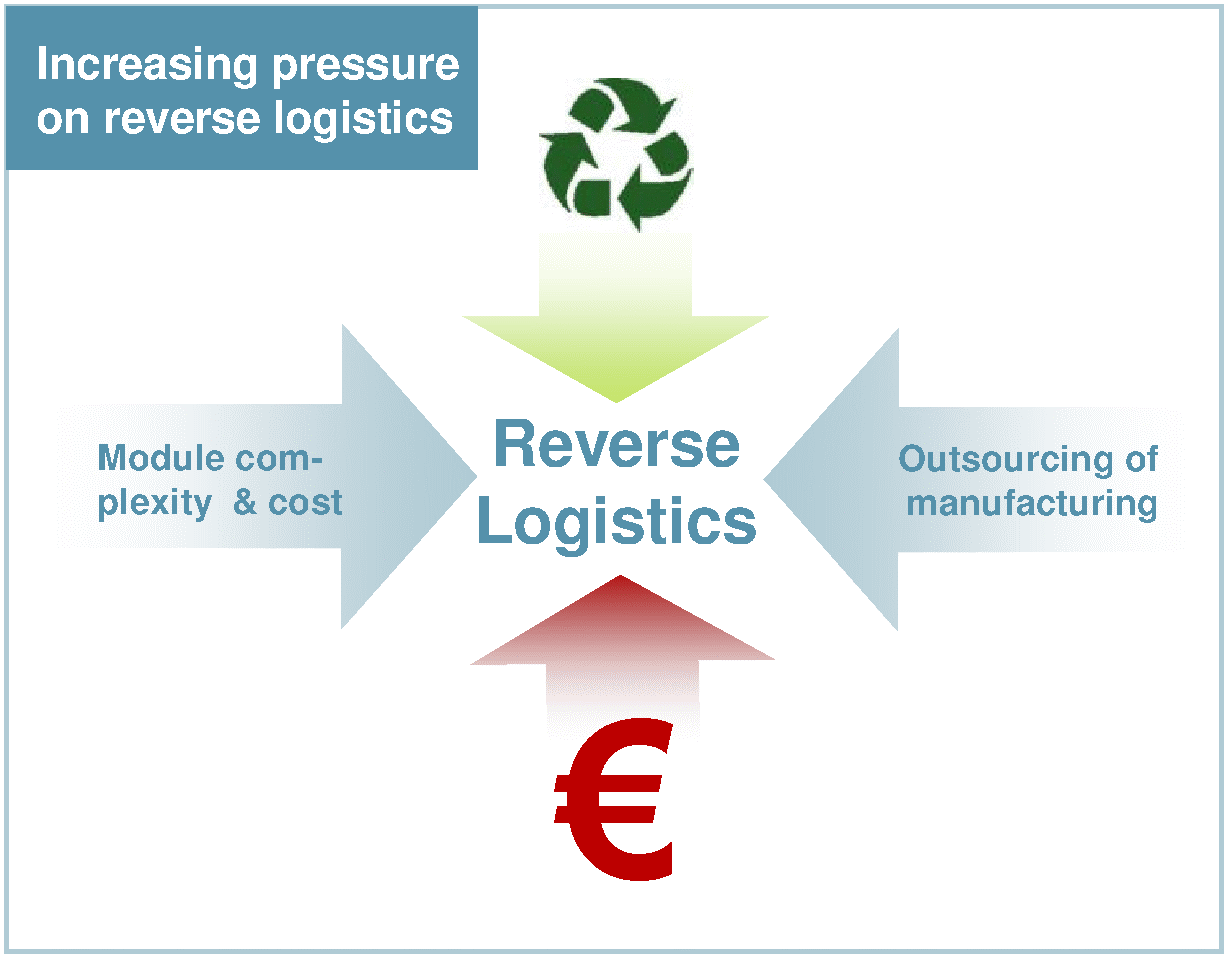 This market change now affects companies that previously didn't even consider having a reverse logistics loop and many of these organisations at the consumer end of market have the most ground to make up. Companies need to take a "drains up" approach to their reverse logistics operations. They need to be asking themselves, whether the operation they have today will work tomorrow?
How challenging the solution to these questions turns out to be is very dependent on the level of maturity of the reverse logistics operation. The diagram below depicts five stages of maturity of reverse logistics: 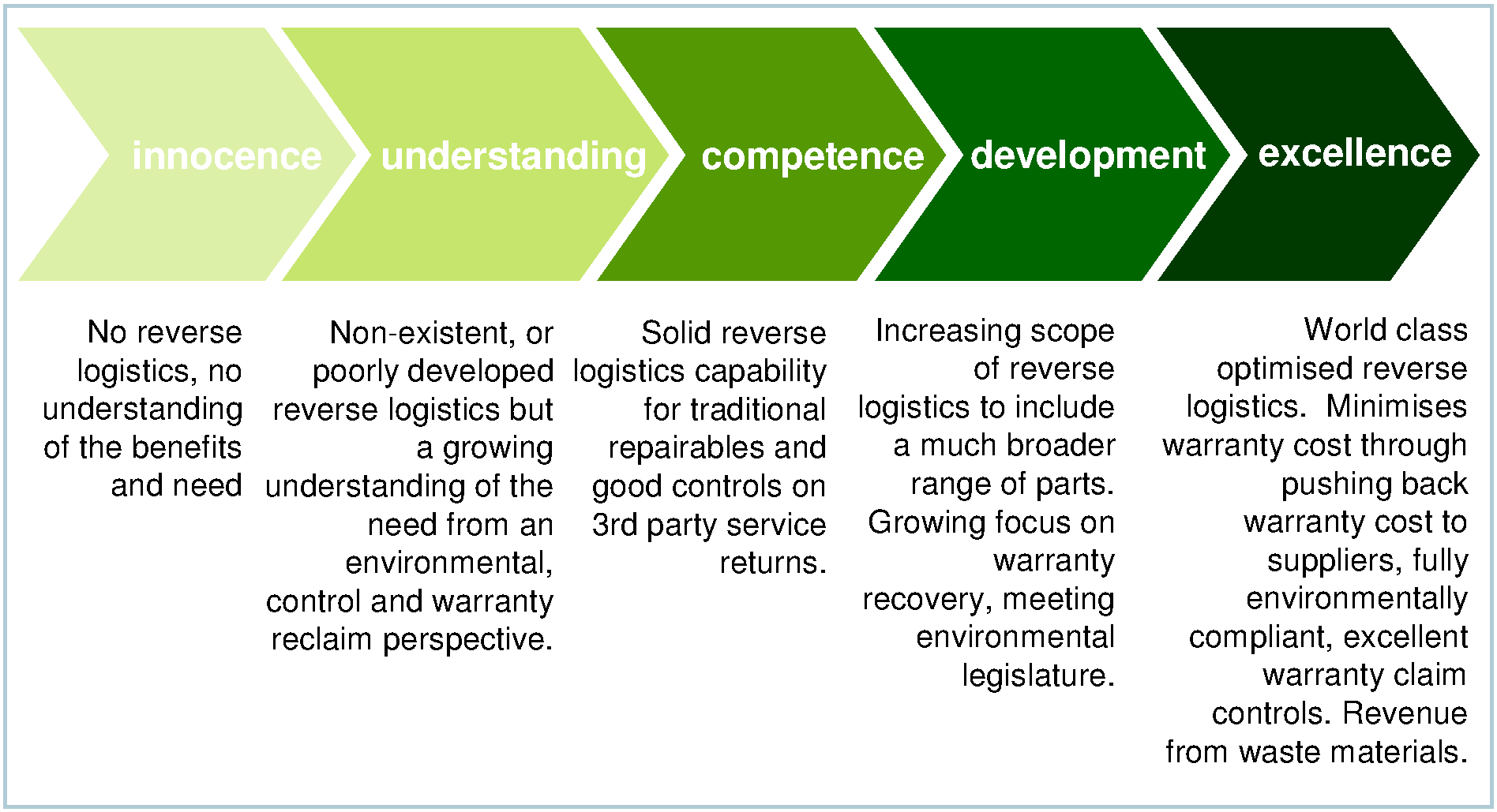 Although there are large variances in individual companies, we can roughly plot different market sectors against this profile. At the mature end of the spectrum, we see the best-in-class IT organisations, which are heavily focused on pushing back warranty costs to their component suppliers and keeping tight controls on their service supplier base. At the less mature end of the scale, we see many of the consumer electronics companies where parts have historically all been deemed as consumable and expensed on issue. Companies finding themselves in one of the first three boxes are more than likely feeling the need to react. The challenge is how, especially when starting with nothing? Many companies need to change both their geographic and their functional perspective of reverse logistics. Geographic PerspectiveFor global organisations, reverse logistics is a global operation and needs to be viewed as one. Trying to manage and control a myriad of country initiatives or manufacturing-led repair groups is close to impossible. So one of the first challenges is to start to get everyone looking at the issues from a regional and global level. One key question that operations should be asking themselves is: Is this a regional, a few place or a localised activity? The diagram below gives some examples of where key processes tend to fall. 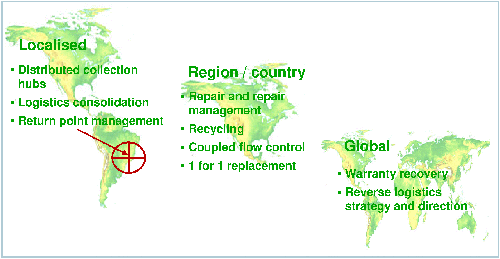 Functional PerspectiveReverse logistics used to be the dirty end of logistics, simply focused on repairables. It was targeted on minimising repair costs, minimising new buy and meeting the outbound demand for repaired stock. In today's world, reverse logistics is not just about repairables. For every part, the question is not just "does it make sense to repair," but also:
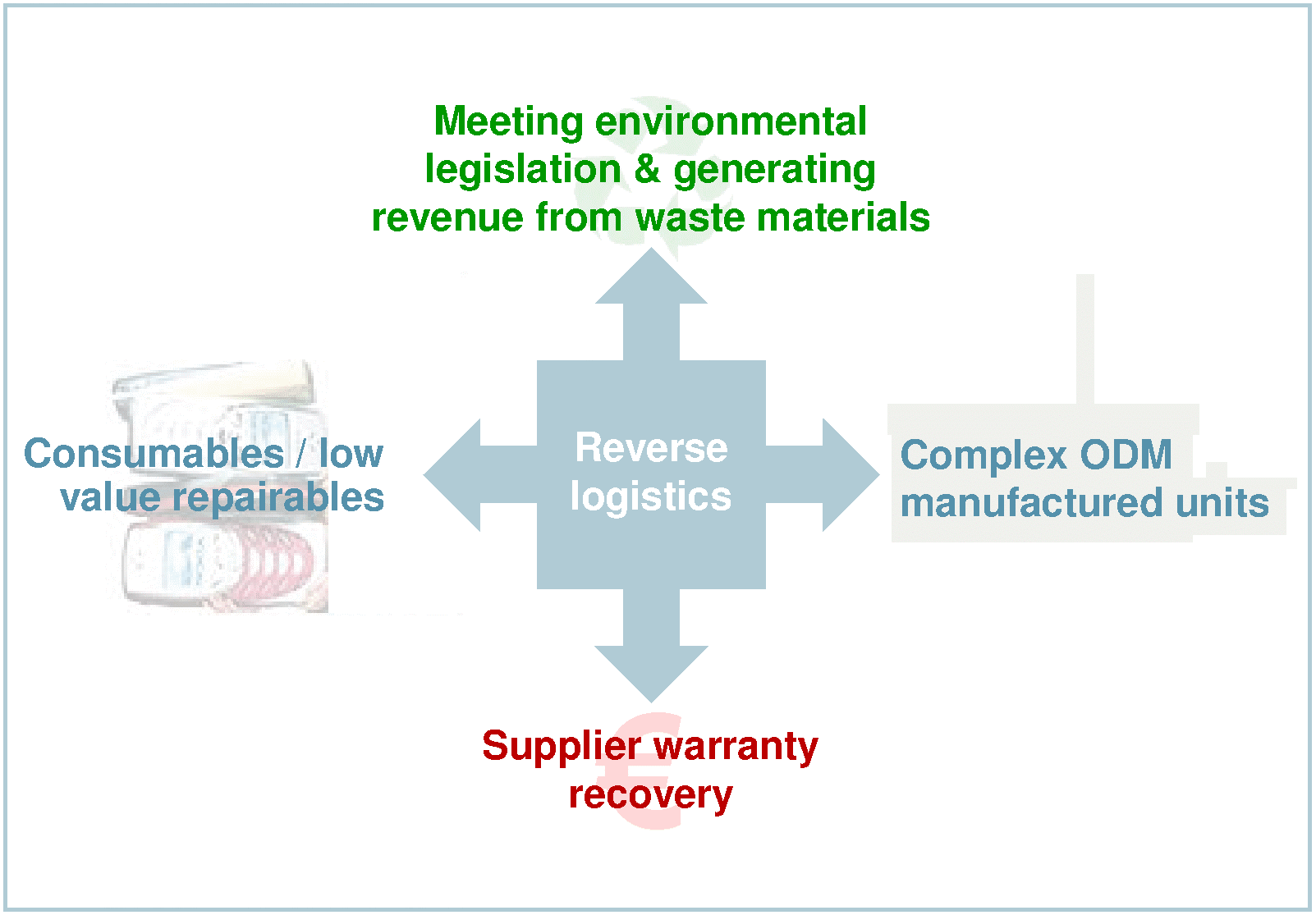 SummaryThere really isn't a choice for most European companies whether to review their reverse logistics, as the financial ramifications of not complying with WEEE and other environmental legislation will become too great. The differentiator is that the companies which achieve excellence in this area will not only meet environmental targets, but also will be able to significantly reduce the cost of service and warranty, and this is not a bonus restricted to any continent. With ever-increasing pressure on product margins, 1% or 2% out of the warranty cost starts to look extremely attractive. About the Author:
Benchmarking to Shape a Best-in-Class | |||||||||||||||||||||||||||||||||||||||||||||||||||||||||||||||||||||||||||||||||||||||||||||||
| |||||||||||||||||||||||||||||||||||||||||||||||||||||||||||||||||||||||||||||||||||||||||||||||






